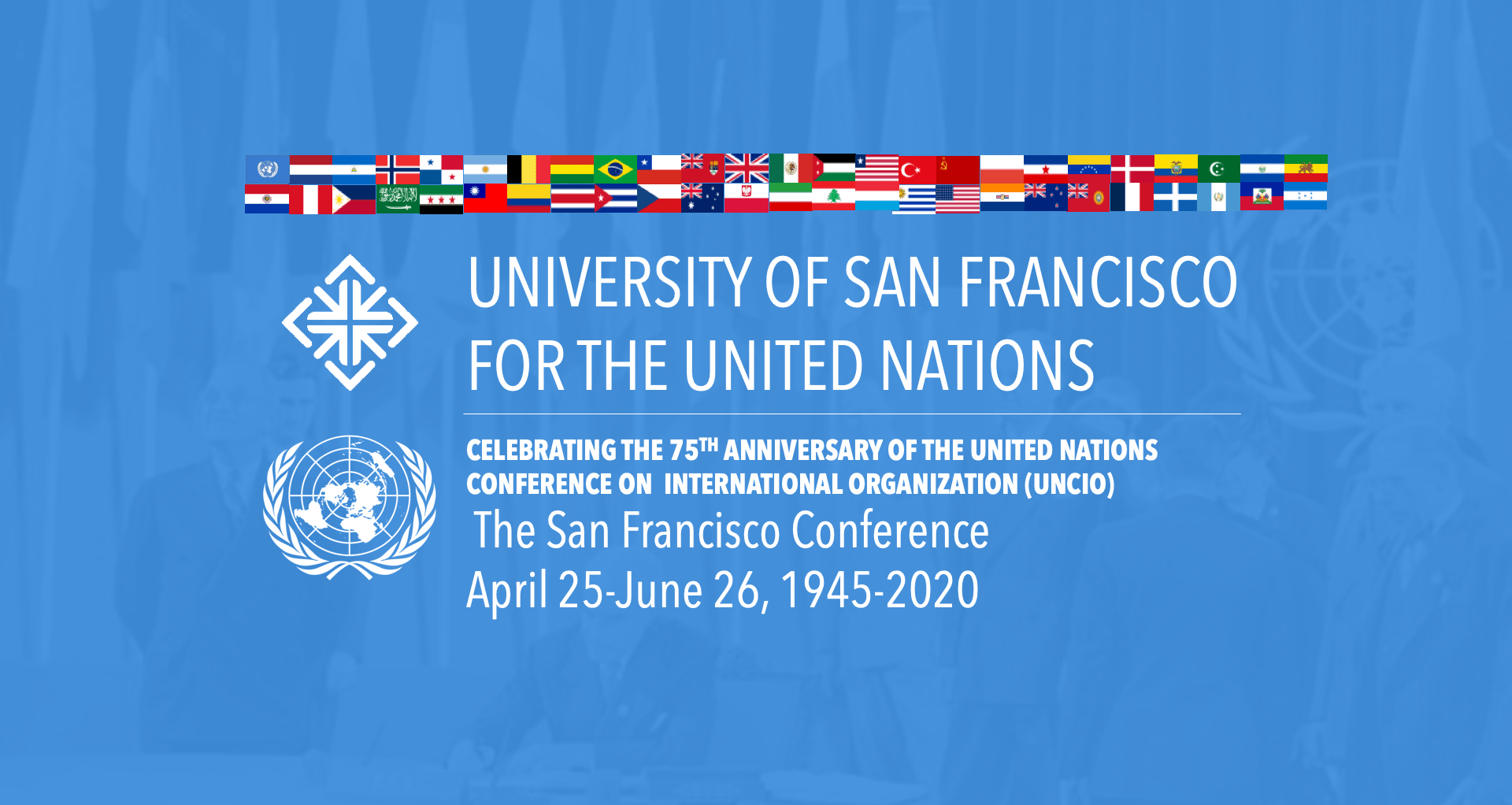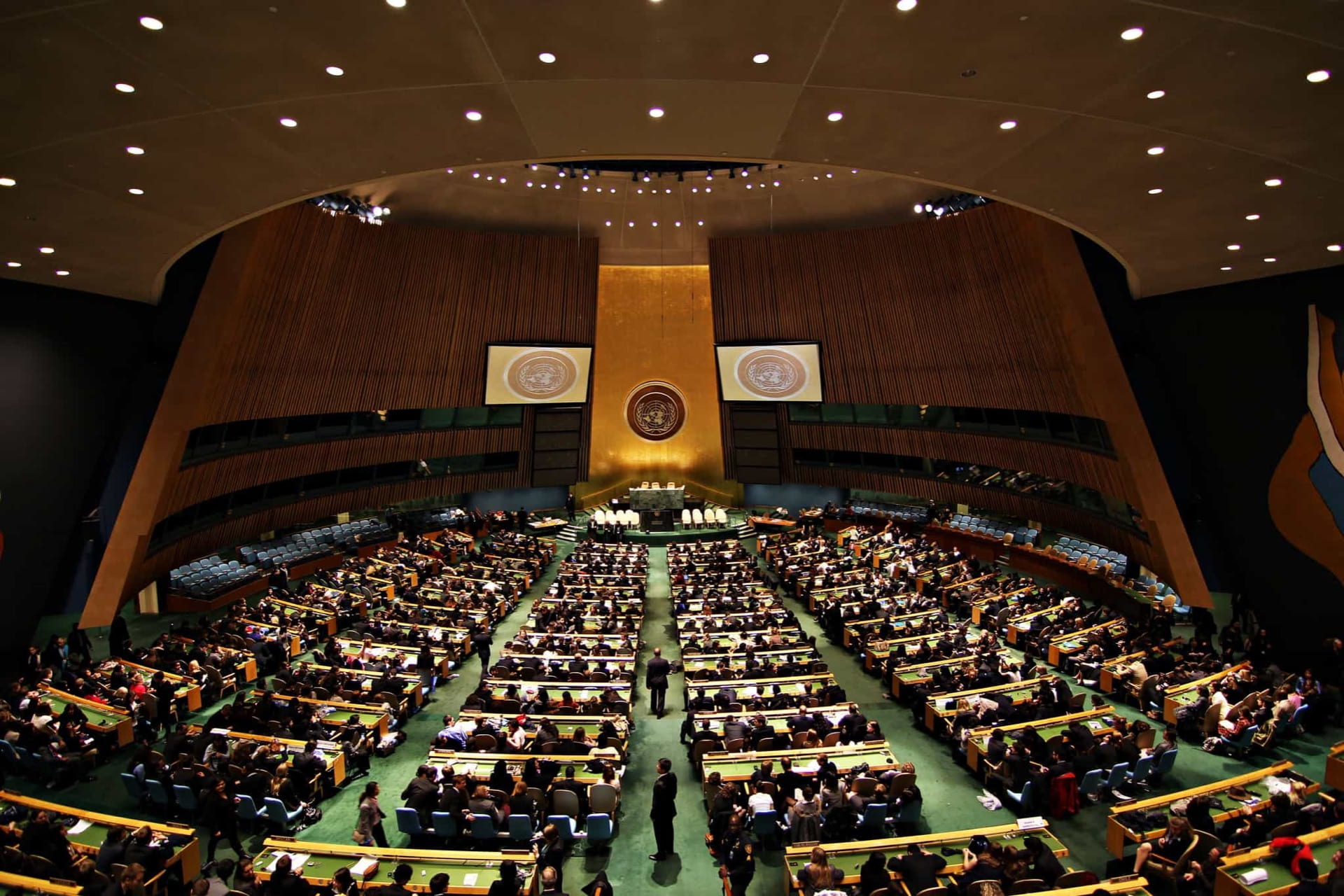
United Nations Secretary General and California government representatives at the San Francisco Civic Center during the UN Charter Anniversary in 2015
The United Nations is…
The UN is the most well-known international organization, but do you really know its mission and functions? Did you know, for example, that the original proposal (Dumbarton Oaks Conference, 1944) of this important international/inter-government organization included only four principal organs? Do you which ones they are? Did you know that thanks to the intense negotiations and the input of women delegates, civil society consultants and others that they were able to add two more core organs to the UN? Did you know that these two new organs, the Economic and Social Council or ECOSOC and Trusteeship Council, were inserted as fundamental challenges to include the voices of NGOs/Civil society and to help make sure of a successful promised decolonization process? These and other topics are explored here and in the upcoming commemoration of the 75th anniversary of the United Nations Conference on International Organization (UNCIO), also known as The San Francisco Conference (April 25 to June 26, 1945). Learn more>>
“The United Nations (UN) is an intergovernmental organization responsible for maintaining international peace and security, developing friendly relations among nations, achieving international cooperation, and being a centre for harmonizing the actions of nations. It is the largest, most familiar, most internationally represented and most powerful intergovernmental organization in the world. The UN is headquartered on international territory in New York City; other main offices are in Geneva, Nairobi, Vienna and The Hague.
The UN was established after World War II with the aim of preventing future wars, succeeding the ineffective League of Nations. On 25 April 1945, 50 governments met in San Francisco for a conference and started drafting the UN Charter, which was adopted on 25 June 1945 and took effect on 24 October 1945, when the UN began operations. Pursuant to the Charter, the organization’s objectives include maintaining international peace and security, protecting human rights, delivering humanitarian aid, promoting sustainable development, and upholding international law. At its founding, the UN had 51 member states; there are now 193, representing the vast majority of the world’s sovereign states.
The organization’s mission to preserve world peace was complicated in its early decades by the Cold War between the United States and Soviet Union and their respective allies. Its missions have consisted primarily of unarmed military observers and lightly armed troops with primarily monitoring, reporting and confidence-building roles. UN membership grew significantly following widespread decolonization beginning in the 1960s. Since then, 80 former colonies have gained independence, including 11 trust territories that had been monitored by the Trusteeship Council. By the 1970s, the UN’s budget for economic and social development programs far outstripped its spending on peacekeeping. After the end of the Cold War, the UN shifted and expanded its field operations, undertaking a wide variety of complex tasks.
The UN has six principal organs: the General Assembly; the Security Council; the Economic and Social Council; the Trusteeship Council; the International Court of Justice; and the UN Secretariat. The UN System includes a multitude of specialized agencies, such as the World Bank Group, the World Health Organization, the World Food Programme, UNESCO, and UNICEF. Additionally, non-governmental organizations may be granted consultative status with ECOSOC and other agencies to participate in the UN’s work. The UN’s chief administrative officer is the Secretary-General, currently Portuguese politician and diplomat António Guterres since 1 January 2017. The organization is financed by assessed and voluntary contributions from its member states.”
The UN System includes many agencies and programs… here is an overview of the international organization. Learn more at https://www.un.org/en/ and https://www.un.int


